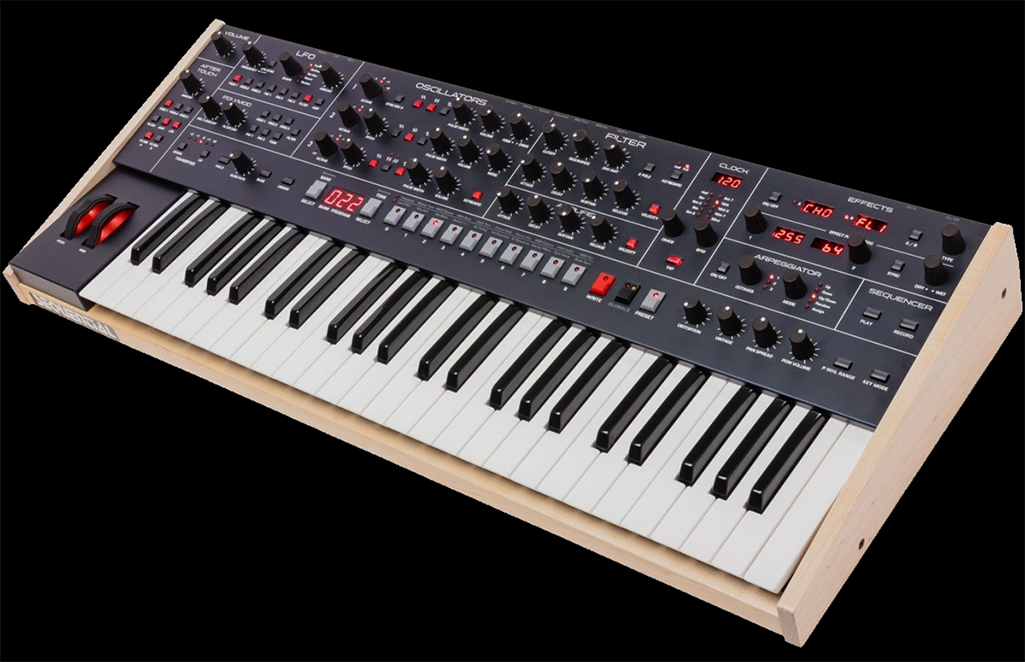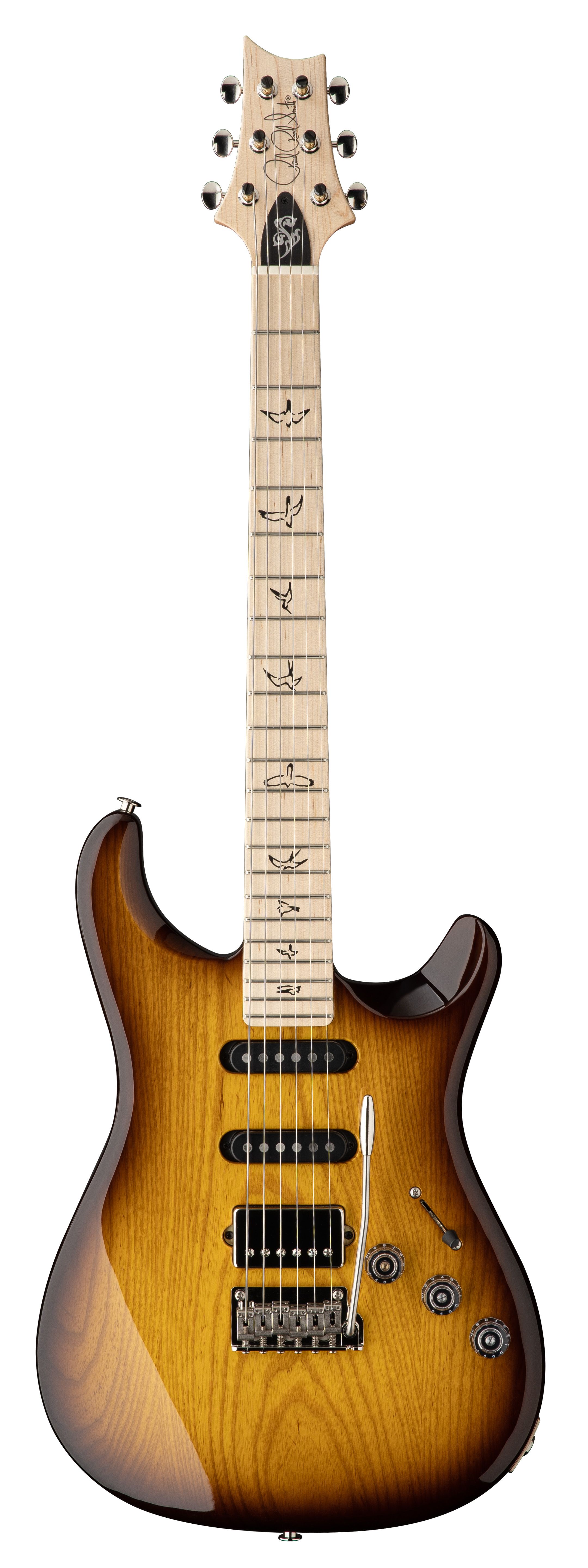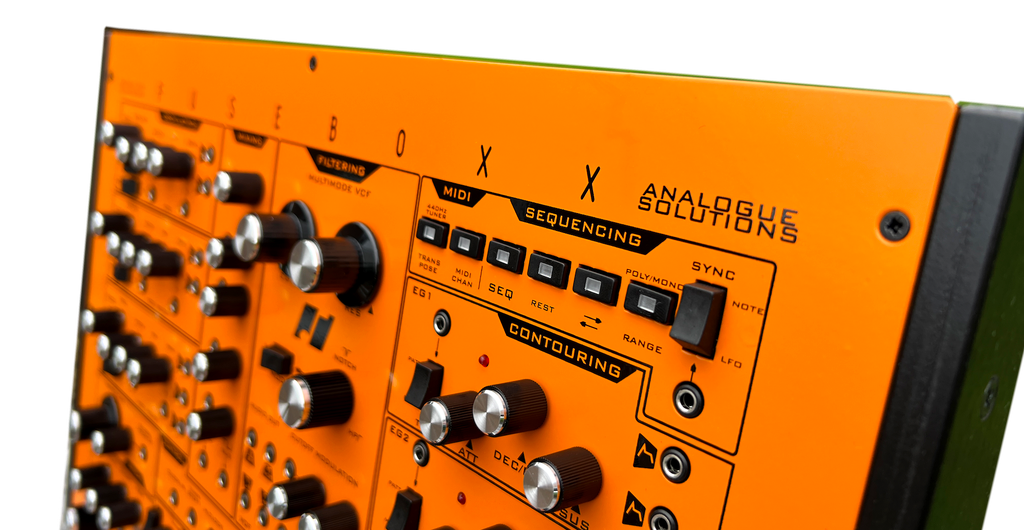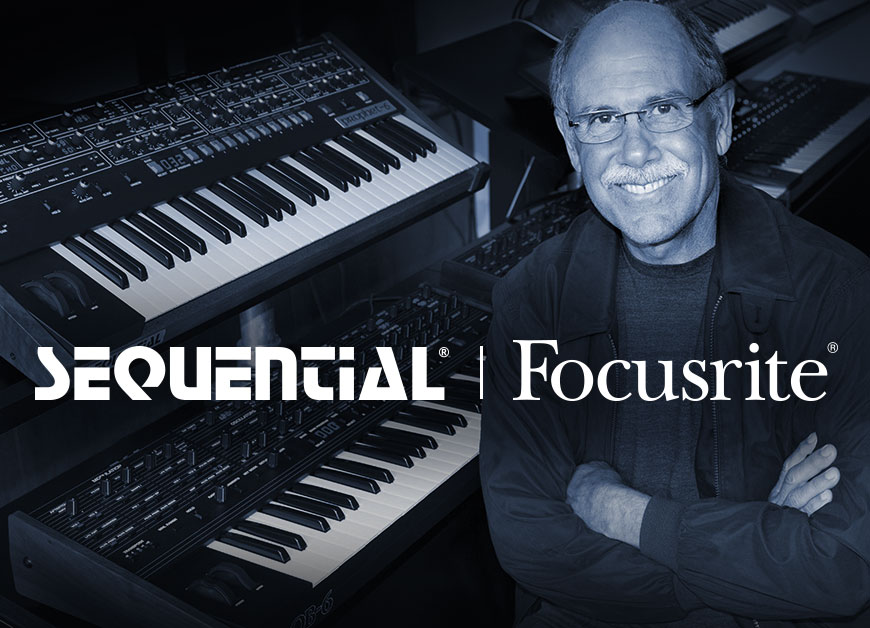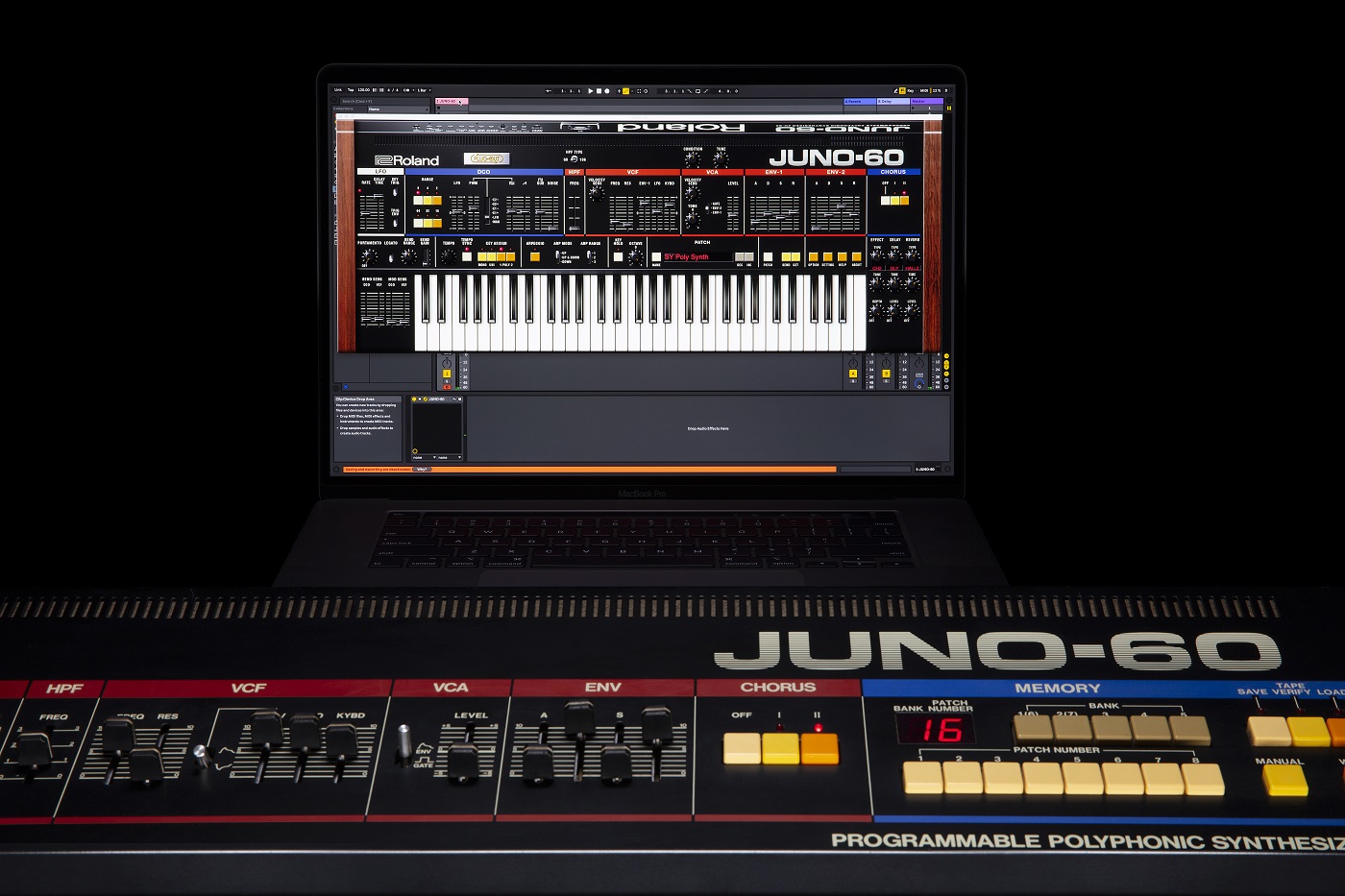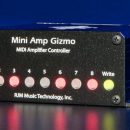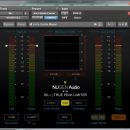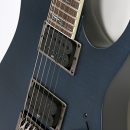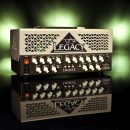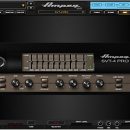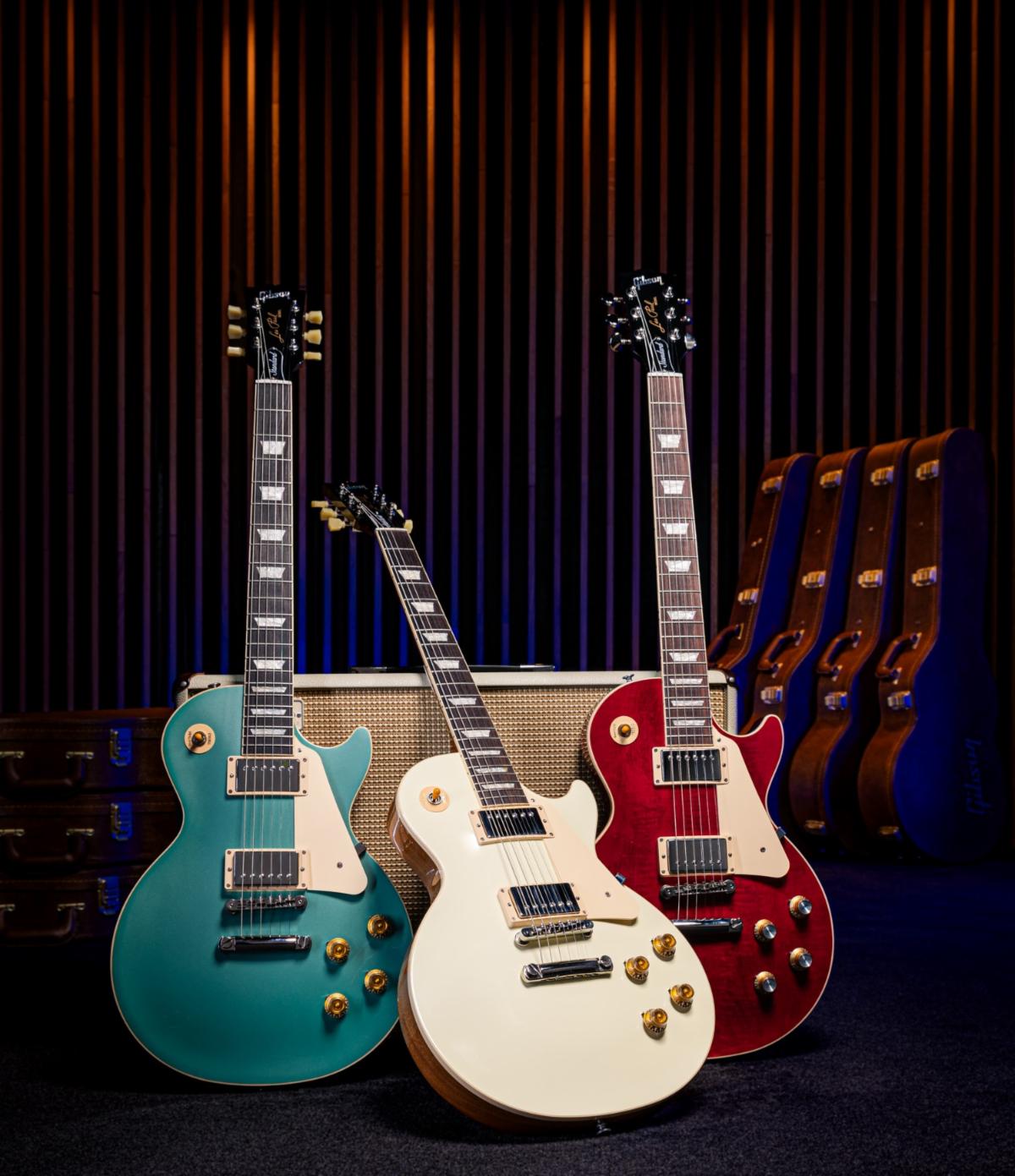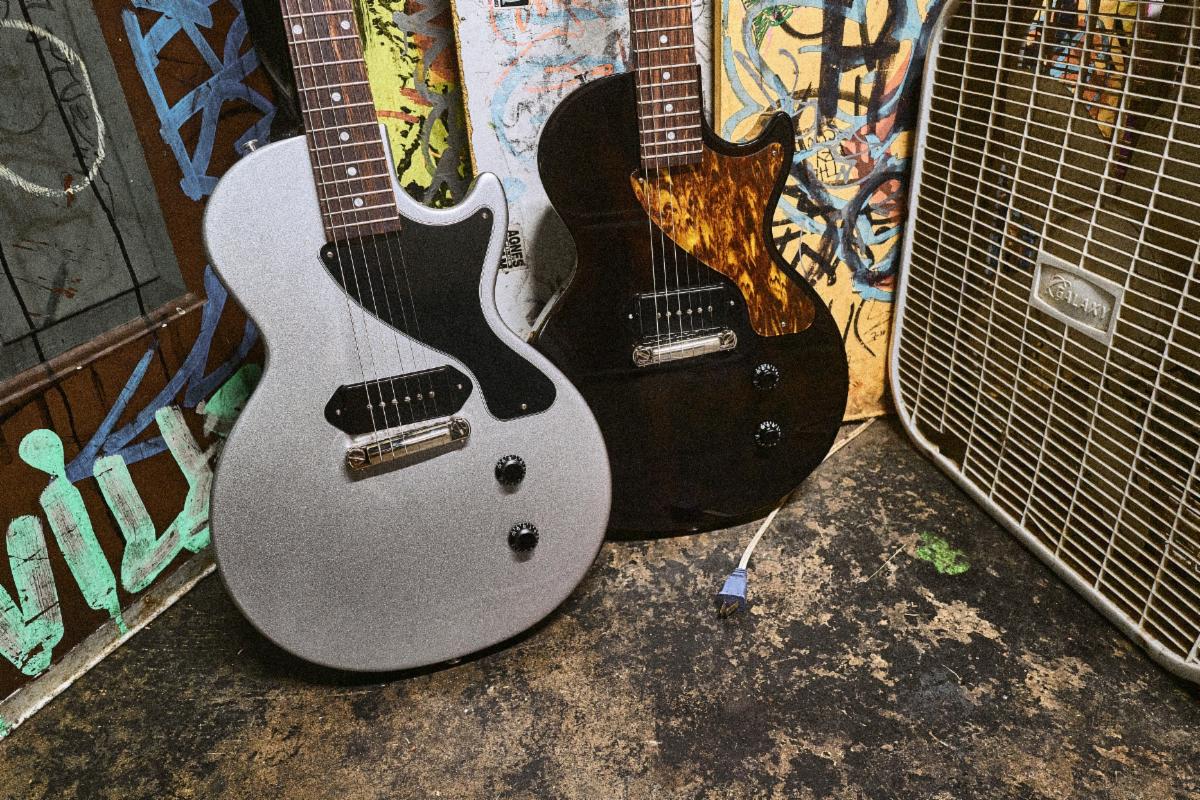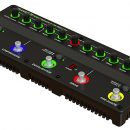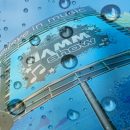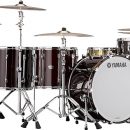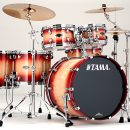Back in 2016, we got our hands on the then-surprising Sequential OB-6, a synth that was a collaboration between Dave Smith and Tom Oberheim (review here). Fast forward to 2023, we now have the Trigon-6, which at a glance seems to share some commonalities with the OB-6. To some degree, this is accurate, but this synth has nothing to do with Tom Oberheim, and sadly, is the last synth that Dave Smith was involved in developing before his unexpected passing last year.
We have always loved Dave and company’s work, and the Trigon-6 is Sequential’s take on a six-voice polyphonic synth utilizing three oscillators (instead of two like on the Prophet-6) plus a switchable 2/4-pole transistor ladder lowpass filter (instead of the Prophet-6’s lowpass/highpass pair or the OB-6's SEM-style multi-mode filter). It’s a welcome design change that is just different enough from the rest of the Sequential lineup to warrant its own product. Is it for you? Read on.
Features
The Trigon-6 is a six-voice synth with three discreet voltage-controlled oscillators (VCOs) per voice. You get several wave shapes to choose from: triangle, sawtooth, reverse sawtooth, and variable-width pulse. A neat feature is that you don’t have to pick just one of these shapes—you can select multiple waveforms in any combination. As per Sequential, other features of the oscillators include:
• Pulse width per oscillator
• Hard sync: oscillator 1 syncs to oscillator 2
• Keyboard tracking on/off (oscillator 3)
• Oscillator feedback and drive controls for increased signal saturation
• White Noise source
• Keyboard pitch tracking on/off
Of note, the third oscillator is slightly different than the first two, as it can switch to low frequency range, can be decoupled from the keyboard, and can provide both falling and rising saw shapes (selectable by a button on the front panel). The oscillator control section, not surprisingly, is in the middle of the front panel, with the corresponding knobs and buttons as you would expect.
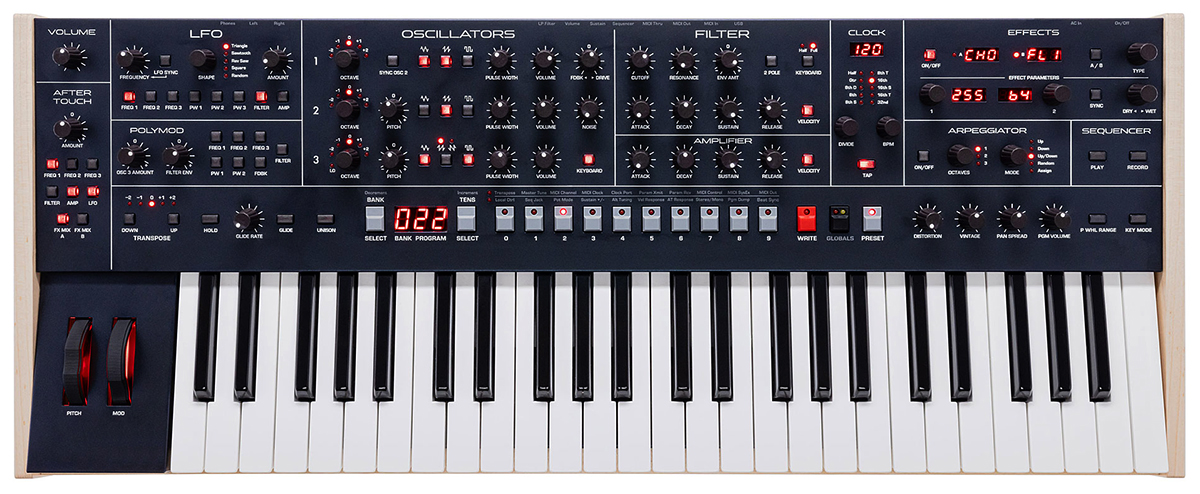 The filter section can be found towards the right side of the oscillator section of the front panel. The enhanced filter section uses a switchable 2/4-pole ladder filter, an improvement over the ladder filter found in the fantastic Sequential Pro-3 (also added here are Feedback and Drive controls). The filter section offers controls for full, half, or no keyboard tracking, an ADSR envelope with continuous bipolar level control, and optional velocity response (denoted by a red, backlit button on the panel) for the filter envelope.
The filter section can be found towards the right side of the oscillator section of the front panel. The enhanced filter section uses a switchable 2/4-pole ladder filter, an improvement over the ladder filter found in the fantastic Sequential Pro-3 (also added here are Feedback and Drive controls). The filter section offers controls for full, half, or no keyboard tracking, an ADSR envelope with continuous bipolar level control, and optional velocity response (denoted by a red, backlit button on the panel) for the filter envelope.
Although you won’t find Sequential blatantly pointing it out, the sound pathway of the Trigon-6 is quite reminiscent of a common Moog design: three oscillators into a ladder filter. Not surprisingly then, if the Prophet-6 leans more towards a Prophet-5 sound, and the OB-6 leans more into a gritty Oberheim sound, the Trigon-6 leans towards a Moog sound, but is certainly not bound the same design limitations.
Getting back to the low frequency oscillator mentioned earlier, this section is found to the left of the oscillator section on the front panel. It offers:
• Five wave shapes: sine, sawtooth, reverse sawtooth, square, and random (sample and hold)
• LFO sync
• Initial amount
• Mod destinations: oscillator 1 frequency, oscillator 2 frequency, oscillator 3 frequency, oscillator 1 pulse width, oscillator 2 pulse width, oscillator 3 pulse width, filter cutoff, amp (VCA)
Below the LFO section on the left side of the panel is the Polymod section, something familiar to Sequential synth players. This section can be used for polyphonic modulation routing from oscillator 3 and/or the filter envelope. It can be used in any combination (with bipolar level controls for each), and can affect any combination of oscillator frequencies, filter cutoff frequency, oscillator 1 and 2's pulse widths, and feedback control. Being able to use the third oscillator for these modulations while oscillators 1 and 2 are still making audio, gives you all sorts of sonic possibilities the OB-6 and Prophet-6 simply can’t create via their two-oscillator designs.
After the oscillators and filters, the Trigon-6 enters similar territory as the OB-6 and Prophet-6. The effects are the same, utilizing stereo analog distortion, dual, 24-bit, 48 kHz digital effects including: reverb (room, hall, plate, spring), delay (full bandwidth digital delay and emulated bucket brigade), chorus, flanger, phase shifter, and ring modulator. There is also delay sync, and true bypass maintains the analog signal path when the digital effects are off. One interesting thing that is different is the inclusion of a feedback circuit effect, allowing you, as Sequential would say, “to add creaminess or create audio destruction.”
Featured is a polyphonic step sequencer with up to 64 steps, and a separate arpeggiator (up to three octave range, selectable note values), master clock and tap tempo, and a Vintage knob, to add some instability/differences/variability between voices. Personally, we like our synths to stay in tune, but we know that some of you vintage synth lovers appreciate a little bit of drift.
Also present is an aftertouch section, and destinations include oscillator 1 frequency, oscillator 2 frequency, oscillator 3 frequency, LFO amount, amplifier envelope amount, filter envelope amount, FX mix A, FX mix B.
Speaking of aftertouch, the keyboard is a full-sized, semi-weighted, four-octave (49-key) keyboard with velocity and aftertouch. The pitch and modulation wheels on the left side of the keyboard are backlit, and the pitch wheel is spring-loaded. There’s also a Unison mode with configurable voice count, and a preset switch that has an interesting function: when on, the front panel is live, and what you see is what you hear. This is in contrast, to say, a Roland Juno-106, where when you load up a preset, the fader positions don’t necessarily match what the preset’s settings really are.
There are 500 user and 500 factory programs in 10 banks of 100 programs each. Like the other Sequential synths in this family, there is no LCD screen, and navigating banks is accomplished by pressing dedicated buttons 0-9, as well as a dedicated bank and preset buttons. Given the limited number of keys, there are also dedicated transpose buttons nearby, and you can go up to two octaves up or up to two octaves down.

Rounding out the back, the jacks you get are:
• Left/mono and right audio outputs (2 x 1/4” phone jack)
• Headphone output (stereo, 1/4” phone jack)
• MIDI In, Out, and Thru ports
• USB for bidirectional MIDI communication
• Filter cutoff expression pedal input
• Volume expression pedal input
• Sustain footswitch input
• Sequencer start/stop footswitch input
Additionally, there is an IEC AC power inlet, which operates on worldwide voltages.
Usability
No doubt, there’s a lot to like about this synth. But...we will go rogue here, and start with what we don’t like, and get it out of the way. While not unique by any means to Sequential, we really dislike the 49-key form factor. We feel there should be at least 61 keys on any premium polysynth.
Another, much smaller gripe is the preset navigation. Rather than having a bank select button, a “tens” button, and a “preset number” button, we would have preferred an alpha dial or a slider to scroll through sounds more efficiently. A deal breaker? Absolutely not, but it certainly would make things a little easier. In Sequential’s defense, if you hold the bank select button while pressing the tens button, the preset goes up by one; if you do the reverse, the preset goes down by one. It works, but with literally 1,000 total sounds, this isn’t the most efficient.
The final area we were surprised by was the “tightness” of the knobs on the control panel. Other Sequential and DSI synths of ours have very smooth turning knobs that require just the right amount of torque to turn. Surprisingly, the Trigon-6 we received had quite a few knobs that required more torque than usual to turn. Maybe it was just our production unit, but some of the knobs seemed a bit tight to our taste.
Now, on to the good stuff. Like all DSI/Sequential synths, there has been a great deal of thought that went into the layout, making this a very usable synth, particular for live hands-on control. Each section is well labelled, and we counted 44 knobs alone! Therefore, everything you want to do is right at your fingertips. Since there’s no screen, there’s literally no menus to wade through. It’s fun to take a sound and while playing it, turn a knob and morph it into something else. Even if you’re not sure what the knob will do, you can still hear in real time what you’re doing.
There is, however, that something that both novice and experienced synthesists will likely enjoy. SoundTower has long partnered with Dave Smith, and they make a Trigon-6 Sound Editor. While beyond the scope of this review, for $69 USD, you get graphical tools to edit your sounds, organize them, and even name them! Apparently, you can send/receive single sounds and/or entire banks at a time. We wish this was bundled with the Trigon, as this seems like something that most owners would find useful. Additionally, while not released yet, the Trigon PlugSE is a plug-in in AU/VST formats that allows your hardware Trigon to be controlled via a plug-in in your DAW.
Sound
As we said earlier, we are always impressed with how Sequential makes their synths seemingly similar in their operation but different in their sonic character. The Trigon-6, while incorporating elements from other members of the Sequential synthesizer family, still has its own sonic character, which makes sense given that the number of oscillators are different, and the type of filter is different from other Sequential products.
With the unison function, you can generate huge sounding parts—particularly if you stack all 18 oscillators onto a single note! There are plenty of nice pads, odd sound effects (in a good way!), and even some borderline glassy sounds that begin to enter FM sonic territory. While not sounding quite like an Oberheim, there’s some gritty sounds in there as well. An remember—those 1,000 presets are only a starting point for wherever your creativity brings you!
There were a number of sounds we liked, but we’d like to point out a few. Patch 14 is a nice lead sound, that with some pitch bend use falls into electric guitar territory—and what keyboardist doesn’t like taking a solo? Patch 49, with a little tweaking, gave us a Cars “You Might Think” percussive synth sound, while patch 214 made us laugh, as it is quite reminiscent of the ‘80s classic “Girls” Beastie Boys synth sound. Getting to bass sounds, we liked patch 237, a staccato synth bass sound reminiscent of Mister Mister’s hit “Kyrie.”
As we mentioned earlier, the keyboard does have aftertouch, and patch 262 reveals an obvious example of this. This is a pulsating sound, but when you dig into the keys (i.e., aftertouch), the pulsating stops; when you lighten the pressure, the pulsating returns. Having a dedicated Aftertouch section on the far left of the keyboard lets you instantaneously assign what the aftertouch will affect, which is extremely useful (it’s so annoying to have to dig through menus on other synths for this kind of useful editing).
The Trigon-6 also can do some percussive sounds as well as funky effects. Check out patches 398 and 468 for some examples. Remember, once you go past preset 500, you enter the “user” sound banks, which are initially set up to repeat the first 500 sounds, but these are user writeable for modifying and saving your own presets.
Documentation and Support
The Trion-6 comes with a helpful Quick Start manual that actually encourages you to try different things with the synthesizer, and comes with a contact support contact card to call if there’s an issue with your synth.
On the sequential website, there’s a short video, and a full manual you can download that is well written and easy to follow (as are all of the product docs from Sequential and DSI).
Price
The Trigon-6 sells for $3,499.00 USD. For most of us, this is not an impulse purchase given the cost, and these days, there are many full-size (61-key) synths that can be had for this amount. However, if you’re in the market for what could arguably be called a modern take on the Moog sound in polyphonic form, done to Dave Smith’s very high standards, you really can’t go wrong. The Trigon-6 covers a lot of ground in a relatively small package.
Contact Information
Sequential
www.Sequential.com

